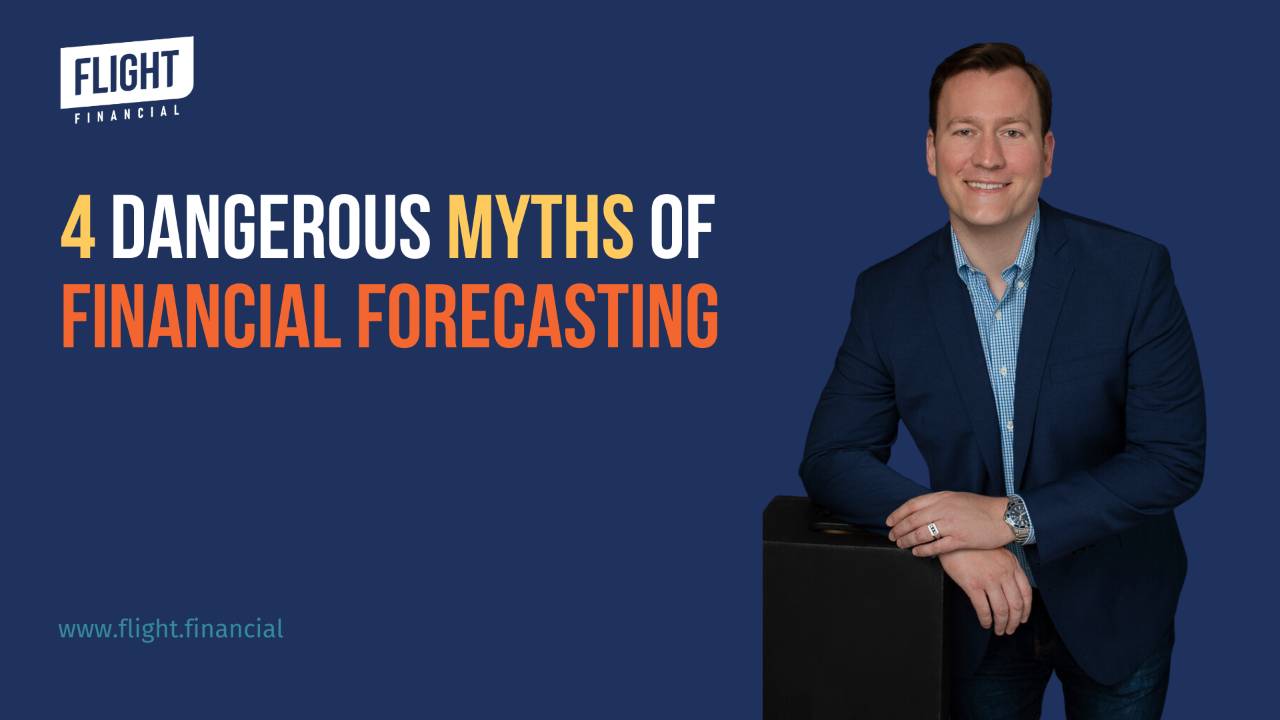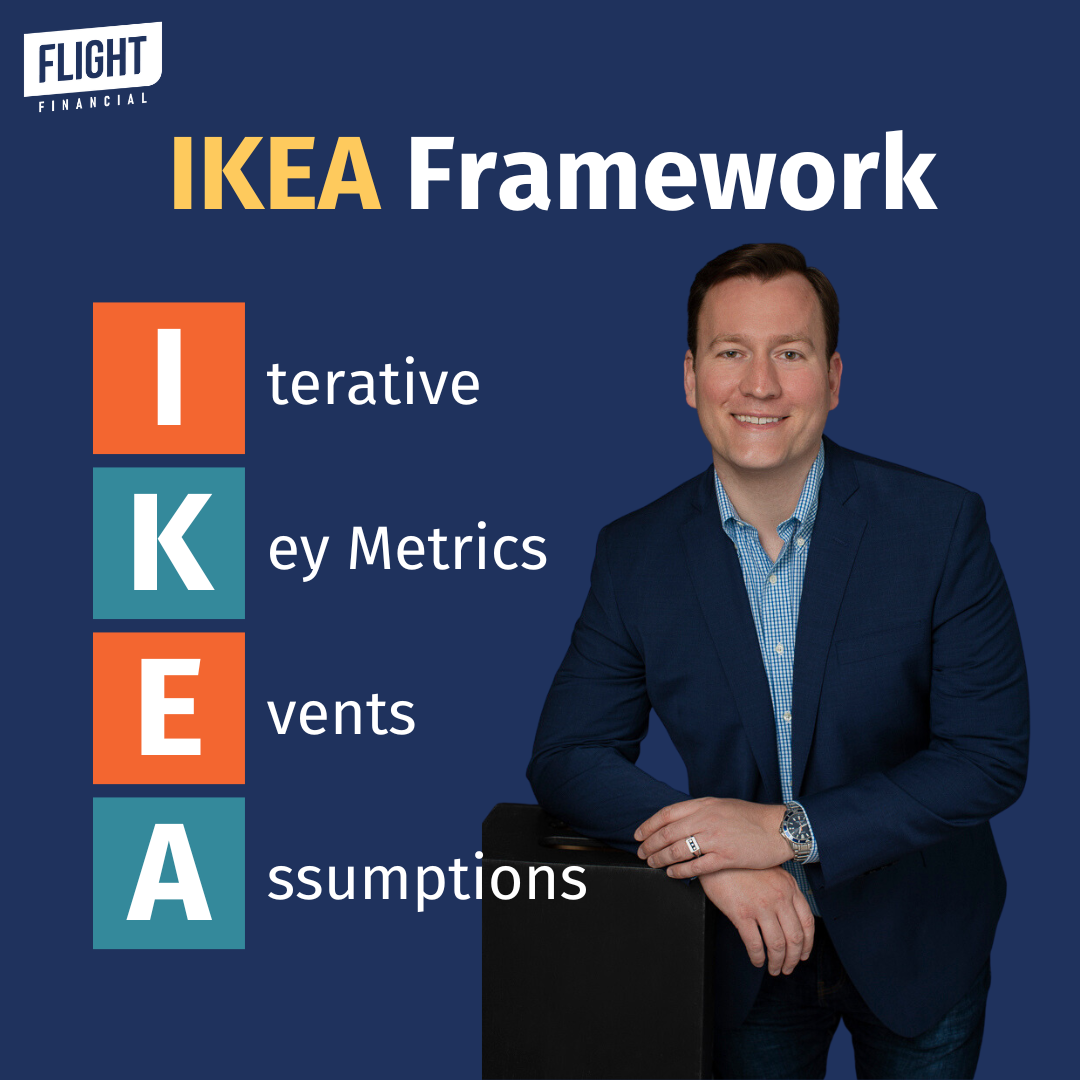CFC #007 - 4 Dangerous Myths of Financial Forecasting
Jun 17, 2023
Are you feeling overwhelmed in your business?
Do you have ambitious dreams, but you’re not sure how to achieve them?
Maybe you have a ton of ideas, but you’re not sure what to focus on or where to start?
The solution is to have Financial GPS installed in your business.
Two weeks ago, I shared a quick snapshot of what Financial GPS entails. If you missed it, you can check it out here.
Last week, I shared a simple framework you can use for the first step in implementing Financial GPS, which is having better financial reporting. If you missed that, you can discover it here.
Today, I want to share some spicy specifics on the next step to setting up Financial GPS in your business: having good financial forecasting.
But first, we need to dispel 4 dangerous myths that many business owners have about financial forecasting.
Read on!
4 Dangerous Myths of Financial Forecasting
Unfortunately, there are a lot of misconceptions about forecasting.
Here’s 4 dangerous myths I want to clear up:
- Myth #1 - Forecasting is a one-time exercise and needs to be exact.
- Truth #1 - Your forecast will never be exact. But your ability to forecast will improve over time.
- Myth #2 - Forecasting needs to be complex and highly detailed.
- Truth #2 - Your forecast should be as simple and easy to understand as possible. It should focus on understanding the main drivers of your business.
- Myth #3 - Forecasting should present a single vision for your business’s financial future.
- Truth #3 - There are multiple possibilities for the future. Your forecast should consider a variety of possible scenarios that could impact your business’s progress towards your financial goals.
- Myth #4 - Forecasting is a waste of time because the numbers are all made up.
- Truth #4 - While it’s impossible to predict the future, it’s helpful to think through the implications of potential scenarios for your business so that you’re prepared to take action proactively, not reactively.
Given these myths and the importance of good financial forecasting for achieving your desired results, it helps to have a framework to keep things clear.
Which leads me to a quick story.
What IKEA Furniture and Your Financial Goals Have in Common
My wife and I recently visited our local IKEA store.
We sampled the food in their cafeteria, including their famous Swedish meatballs (not life-changing, but good).
Then we made our way through their intricate maze of product displays to collect what we’d come for:
A new shelf unit.
If you’re familiar with IKEA, you know they sell ready-to-assemble furniture.
In other words, you’ve got to put it together yourself.
This experience is similar to getting your desired financial results from your business.
First, you need a clear vision/goal for what you want to accomplish, similar to the picture of the assembled furniture.
Next, you need a firm understanding of your business’s current financial situation, similar the parts list included with the unassembled furniture kit.
Finally, you need a roadmap to help you get from where you are to where you want to be, similar to the instructions IKEA includes in each ready-to-assemble kit.
IKEA Framework for Good Financial Forecasting
Fortunately, I’ve developed a simple framework to help you ensure you have good financial forecasting in your business.
My IKEA framework will give you a clear action plan of how to take your business from where it is to where you want it to be. Just like the instructions that come with IKEA furniture, but easier.
IKEA stands for:
-
Iterative - your forecast should be a rolling work-in-progress. You will update your assumptions for the outlying months as you go, based on your business’s most recent performance
-
Key Metrics - your forecast should give you a realistic target to aim for with respect to the metrics that are most relevant to achieving your goals (e.g. revenue growth, net profit margin, etc.)
-
Events - your forecast should include a base-case best-guess scenario (aka event) for what you believe you will achieve in your business over the next 12 months. It should also have scenario analyses for potential worst-case (e.g. losing 20% of your revenue) and best-case (e.g. winning several low probability sales opportunities) events for your business
-
Assumptions - your forecast should be built on clear, justifiable assumptions that are based on your current financial reality as shown in your financial reporting (if you missed it, here’s my take on what makes good financial reporting).

Let’s look at a recent example of applying IKEA to a business.
Recent Case Study
One of my service business clients wants to 3X their revenue so they can increase the owners’ take-home pay.
Prior to hiring my firm, they had never used a forecast in their business.
And they were at first a little unsure of whether it would work for them.
But, they understood that accelerating their growth requires a different approach than they’ve tried before.
So, we used the IKEA framework to help them chart a course from their current financial state to their desired destination.
- Iterative - the forecast went through multiple versions before they were ready to start using it in their business. As the year has progressed, they’ve gotten more comfortable adjusting the assumptions based on their business’s year-to-date performance.
- Key Metrics - we selected revenue growth from new and existing business and also net profit margin as key metrics to monitor, along with cash flow.
- Events - we created a base-case scenario, a worst-case scenario, and a best-case scenario to understand potential ranges for performance and the related decisions associated with potential events, such as sustained high inflation, delayed sales, and additional hires.
- Assumptions - we referenced their prior year performance as a starting point. Then, we asked what would need to be true to hit their desired 3X revenue target over the next 12 months. From there, we worked backwards to create a realistic plan with monthly and quarterly milestones for achieving their desired year-end performance.
As a result, the owners have a clear roadmap for how to achieve their ambitious financial goals.
What’s next?
Using my IKEA framework to map out a financial forecast for your business is the final step to implementing a robust Financial GPS in your business.
Armed with good financial goals, reporting, and forecasting, you’ll be well on your way to achieving your business goals.
Next week, I’ll share some specific metrics you’ll want to track for your business to get the most value from your Financial GPS.
If you’re ready to reach your financial goals and want some free how-to help, you won’t want to miss it.
Stay tuned!
In the meantime, if you’re looking for more, there’s a couple ways I can help you:
- Watch my free on-demand training on my 5-step system you can use to get the financial results you want from your business and feel less overwhelmed. Free training here.
- I can help free you from financial stress in your $1M+ services business and discover a faster route to the results you need for the life you want. Book a call here.
